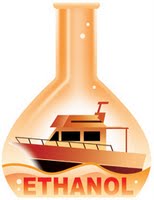Ethanol: How Much Is Too Much for Boaters?
 Over the last few months, we’ve visited and revisited the threat posed by ethanol additives to the small boat industry. Specifically, ethanol lobbyists are seeking a waiver to sell E15 – that’s gas with a 15 percent concentration of ethanol – or even E20 as a standard fuel mixture for marine engines. As many boaters are aware, most small vessels on the market and in the water today are ill-equipped to deal with such high concentrations of the additive.
Over the last few months, we’ve visited and revisited the threat posed by ethanol additives to the small boat industry. Specifically, ethanol lobbyists are seeking a waiver to sell E15 – that’s gas with a 15 percent concentration of ethanol – or even E20 as a standard fuel mixture for marine engines. As many boaters are aware, most small vessels on the market and in the water today are ill-equipped to deal with such high concentrations of the additive.
The question, then, for most boaters is “how much is too much?” The answer depends on the make, model and year of each individual boat. While most outboards are made to handle standard two cycle oil made by the likes of Yamaha, Evinrude and Mercury, marine engines can generally tolerate E10. The fuel system of the boat is a whole other story, as even a 10 percent concentration of ethanol can do irreparable damage.
E10 has a shelf life of two weeks, after which time it undergoes phase separation. If a boat sits idle for any extended stretch of time, the ethanol additive will evaporate, leaving behind only low-octane fuel. This fuel is much more likely to create blockages in the fuel system, and the ethanol that separates will sink to the bottom of the tank. After phase separation occurs, the fuel system is rendered inoperable until it’s drained.


Comments